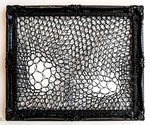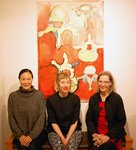 Narrowsburg
NarrowsburgLight Rain Fog/Mist, 43°
Wind: 8.1 mph
 Narrowsburg
NarrowsburgBetween the howling winds, trees coming down, power outages and a tornado or two, March definitely roared into town. Whether it goes out with a whimper is yet to be determined, but as last …
Stay informed about your community and support local independent journalism.
Subscribe to The River Reporter today. click here
This item is available in full to subscribers.
Please log in to continue |





Between the howling winds, trees coming down, power outages and a tornado or two, March definitely roared into town. Whether it goes out with a whimper is yet to be determined, but as last week’s storms raged through the Upper Delaware River region, I hunkered down with the Wonder Dog amending my schedule as sirens wailed outside. “What a weird winter,” I muttered to the pup, as the lights flickered and dimmed. These days, it seems, things are far less predictable than I previously thought—and it’s not just the weather.
There was a time when I felt confident in accurately predicting how I might respond to a new film coming out, the latest bestseller or a dance craze sweeping the nation, and my comfort zone with art was established long ago—right, wrong or indifferent. Little did I know that my life in the country would be constantly challenging the preconceived notions that I once held dear, or that I’d be willing to admit that I’m rarely right, often wrong, and indifference would become unacceptable. The plethora of local galleries and the artists who inhabit them on both sides of the river are responsible for my newfound appreciation of the unknown, and as a result, when I hear of a new exhibition about to take place, I leave my attitude at the door and walk in with an open mind.
Such was the case last Saturday, as I made my way to Livingston Manor and the Catskill Art Society (CAS, www.catskillartsociety.org) and a new art show (on display through April 9) called “Three Dimensions,” featuring the work of MaryKate Maher, Sui Park and Elizabeth Riggle. I’m pretty sure that one of the reasons I’ve become more open to artistic expression that once left me flummoxed is the “artists’ talk” that many of our local galleries present, which not only provides an opportunity for the artist to explain their “process” to the general public, but also opens the floor to questions for guys like me, determined to learn a thing or two. As good luck would have it, all three were on hand the other day. CAS assistant to the director Nancy Sadler led the discussion with commentary and questions herself, all of which illustrated Sadler’s knowledgeable insight to a world that often baffles me.
“That’s right, I’m a material girl,” Maher laughed while addressing the crowd of art aficionados taking their seats. “I employ the use of resin, paint and industrial materials to mimic organic forms and look for ways they might relate to each other.” In fact, it would appear that she succeeds, for while several of her large sculptural pieces certainly looked liked stone, I had the opportunity to ask her directly if it was all based on illusion. “It’s actually salt, not marble,” Maher explained, as I resisted the urge to touch. “I like to simplify familiar forms and interpret them as less recognizable.”
In the space across the hall, Sui Park’s three-dimensional “flexible organic forms” hang from the ceiling and float along the walls. According to Park they “can be interpreted in various ways, including landscapes, living organisms, or social ideas”—the sort of intellectual explanation that leaves me scratching my head. “They look like fish,” I said to Park, during the informal chat led by Sadler as the artist explained her use of black and white cable ties, intricately woven together to represent “brush strokes” and the ornate framing of her sculptural designs. “So many questions!” the artist declared as I raised my hand repeatedly. I want to understand that which eludes me, really I do, and these conversations are illuminating, IMHO.
Connecting the two is Elizabeth Riggle’s “Vertebrae Opera,” a series of paintings of human bones, with an emphasis on the spinal “chord,” which reflect a Tibetan form of musical instrumentation literally fashioned from bones. “The continuous drawing of the bones, from right to left, generate what I call ‘sheet music,’” Riggle explained, “and my early work on anthropology installations has served me well. I want to know what the ‘music of the bones’ looks like,” she elaborated, “so the drawing functions as both research and expression.”
Resisting the urge to hum the old “thigh bone connected to the leg bone” ditty, I soaked it all in and truly appreciated what all three women had to say. While some concepts still elude me, the opportunity to learn, grow, and stretch my once-clipped wings of appreciation for aspects of the art world that I sometimes fail to understand. I look forward to more exhibits and other conversations as the days grow longer and the winter of my discontent fades into memory once again. Out like a lamb? Works for me.
Comments
No comments on this item Please log in to comment by clicking here